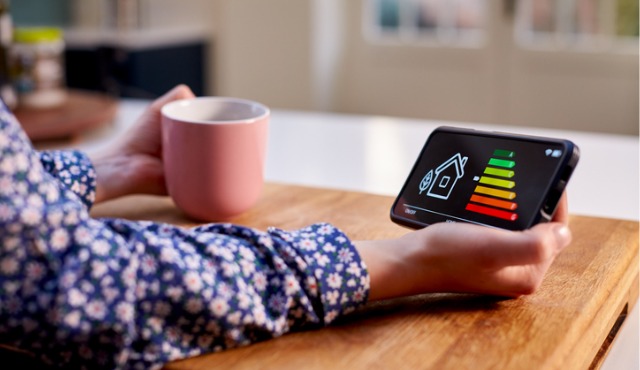By Dixie Somers
Do you find yourself cringing every time your energy bill comes in the mail? You’re not alone. Plenty of homeowners are looking for ways to save money on their utility bills each month. Fortunately, there are a number of simple home upgrades you can make that will help you save money and reduce waste. Here are five smart ways to make your home energy efficient and save on bills.
Upgrade to Energy-Efficient Appliances
The first and most significant step to make your home energy-efficient is to upgrade to energy-efficient appliances. Choose home appliances with ENERGY STAR rating as they consume less energy and help you reduce your electricity bills. Also, consider investing in advanced smart-home technology for better energy management.
If you're worried about the cost of upgrading to energy-efficient appliances, there are ways to save up for them. One option is to set a monthly budget specifically for saving towards these new appliances. You can also look into financing options or government rebates that may be available for purchasing energy-efficient appliances. Additionally, consider selling old or unused items in your home to generate extra funds for this investment.
Seal Windows and Doors
Sealing windows and doors is an easy yet effective way to make your home energy-efficient. When doors and windows aren't sealed correctly, they allow hot air to escape during winters and cool air during summers, causing the HVAC system to work harder, consuming more energy. Sealing these gaps can significantly reduce your energy bill.
If you notice drafts, condensation, or difficulty opening and closing your windows or doors, it may be time to replace them. These are signs that they are no longer functioning properly and are likely leaking air, which can lead to increased energy bills. You can also conduct a simple test by holding a candle near the edges of your windows and doors on a windy day. If the flame flickers, it's a sign of air leakage.
Replacing leaky windows and doors with energy-efficient ones will not only help you save on bills but also improve the overall comfort and insulation of your home. Be sure to find a reputable home window replacement company so you can get the job done right.
Install a Programmable Thermostat
An old and inefficient thermostat may add up more to your bill than you think. Consider upgrading your thermostat to a programmable one or a smart thermostat. These can be programmed to adjust the temperature and humidity levels depending on your schedule, resulting in less energy consumption and lower bills.
If you're not tech-savvy, finding the right programmable thermostat can seem like a daunting task. But don't worry, there are many user-friendly options available in the market. Look for thermostats with simple and easy-to-use interfaces and follow step-by-step installation instructions. It's also helpful to read reviews and seek recommendations from friends and family who have experience with programmable thermostats.
Replace Your Traditional Light Bulbs
Traditional bulbs may be inexpensive, but they consume more energy than LED or CFL bulbs. Switch to LED or CFL bulbs to save money while still getting the same bright light. Moreover, they have a longer lifespan than traditional bulbs, saving you money on replacements.
LED and CFL bulbs can be found in most home improvement stores, hardware stores, and even some grocery or department stores. Shopping online is also a convenient option with many retailers offering a wide selection of energy-efficient bulbs at competitive prices.
Additionally, you may want to consider checking for any rebates or discounts available for purchasing these types of bulbs. It's also important to properly dispose of your old light bulbs, as they contain hazardous materials that can harm the environment if not disposed of correctly.
Utilize Natural Light and Energy-Saving Curtains
Take advantage of natural light during the day by keeping your curtains open instead of relying on artificial lighting. This not only saves energy but also provides a more pleasant and natural lighting in your home. To minimize heat gain during summers, use energy-saving curtains or blinds that can block the sun's rays. This will reduce the workload on your cooling system, ultimately lowering your bills.
Insulate Your Home Properly
Lastly, proper insulation can significantly impact your home's energy efficiency. Insulation creates a barrier around your home, maintaining a stable internal temperature during changing weather conditions. Efficient insulation also results in fewer drafts, making your home more comfortable and reducing your energy bills.
To find weak spots in your home's insulation, start by checking the insulation levels in your attic and crawl space. You can use a ruler or tape measure to see if the thickness of the insulation meets recommended levels for your area. Next, check for any visible gaps or holes in walls and ceilings where air may be able to escape.
You can also hire a professional energy auditor to conduct a thorough inspection and identify any potential problem areas. By addressing these weak spots, you can improve your home's overall energy efficiency and save on bills.
By implementing any of these tips, you can make your home energy-efficient and save money. Upgrading to energy-efficient appliances, sealing your windows and doors, installing a programmable thermostat, replacing your traditional light bulbs, and insulating your home are all simple and cost-effective ways to reduce your monthly electricity bills. So, take your first step towards making your home more eco-friendly while also saving money.
Dixie Somers is a freelance writer who loves to write for business, health and women’s interests. She lives in Arizona with her husband and three beautiful daughters.








